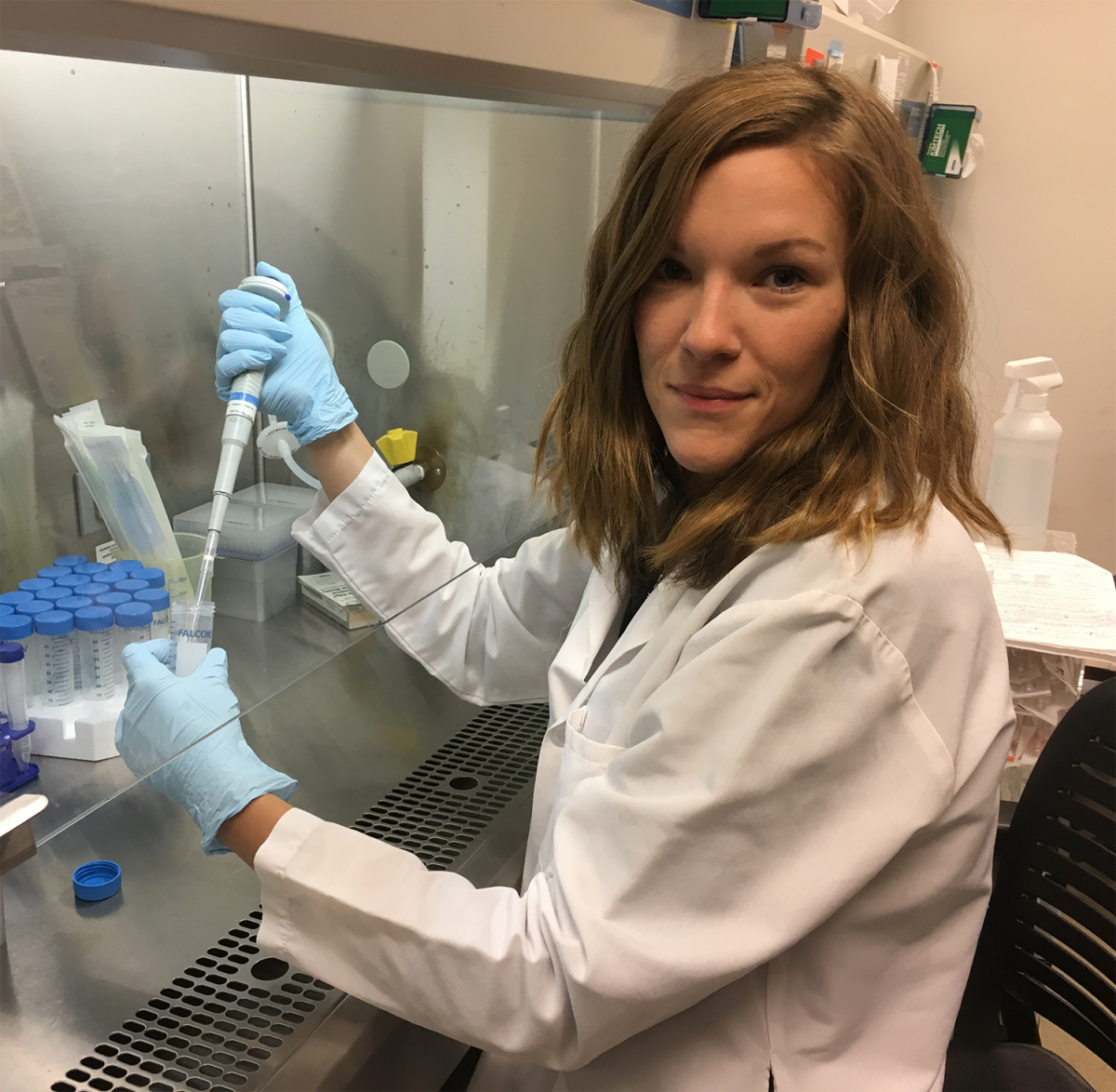“It is unthinkable that a doctor could tell you that there is nothing that can be done for your child,” says Damon Runyon-Sohn Pediatric Cancer Fellow Kathryn R. Taylor, PhD, of Stanford University School of Medicine. But that is the reality for hundreds of families who are facing a devastating  pediatric brain cancer diagnosis called glioma.
pediatric brain cancer diagnosis called glioma.
Brain cancers account for about 15% of pediatric cancers—the second most common type of cancer in children with average survival only 9 to 15 months. Research on these deadly cancers is critical, since no new drugs have been licensed to treat children or adults for 20 years.
“We now know that pediatric cancers are not the same as their corresponding adult cancers and may require different treatments. I chose to study the unique development of pediatric tumors because it is key to finding effective therapies,” says Kathryn. Her research focuses on how glioma cells use signals in the surrounding brain tissue to promote their own growth.
“The Damon Runyon Award has enabled us to study a new area of glioma research that was previously unrecognized by the field as being significant. It has given me the freedom to undertake research in neuron-glioma interactions that I could not have done anywhere else. We have identified a novel way that tumors hijack normal neurodevelopmental processes to infiltrate healthy tissue,” explains Kathryn.
“This ability to invade is a major contributor to the poor prognosis seen in patients, and there are no effective therapies to stop tumors from spreading. My goal is to identify unique therapeutic interventions and provide some desperately needed hope for treating these challenging diseases.”
This month, Kathryn presented her findings at the Pediatric Neuro-Oncology Basic and Translational Research conference in San Francisco. Her exciting results confirmed that healthy neurons secrete the protein BDNF, which promotes pediatric glioma growth. She went on to show that an existing drug could target the protein TrkB on the tumor cells and stop their growth response to the BDNF signals in the surrounding tissue. The next step will be confirming the mechanism of this interaction.
This work offers a potential drug to treat all pediatric gliomas, including the highly malignant glioblastoma and deadly childhood brain cancer DIPG (diffuse intrinsic pontine glioma). Currently, radiation is the only option for DIPG since the tumors can't be removed by surgery, and chemotherapy doesn't work.
“I am passionate about this research—to potentially change the future of patients with pediatric glioblastoma is incredibly gratifying,” she says.







